The direction "Ceramic floristry" conquers increasing popularity in the world. Flowers made in this technique can become an excellent decoration, not distinguishable from living colors.
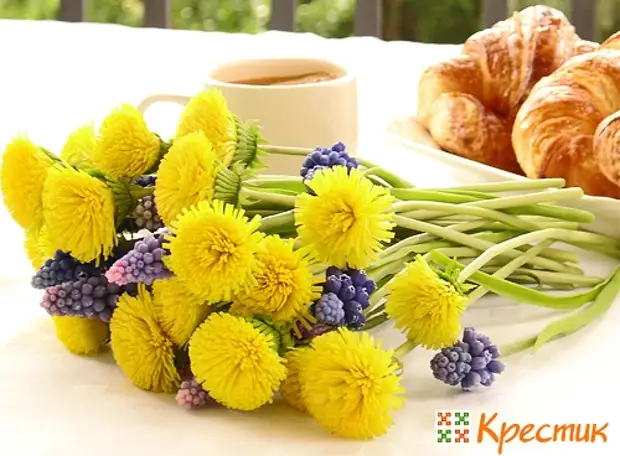
Materials used in ceramic floristry
Polymer clay
The polymer clay is the plastic mass of industrial production, which is similar to the touch and in appearance, it looks like plasticine and has a recognizable herb smell. For solidification, the product is usually subjected to temperature processing.
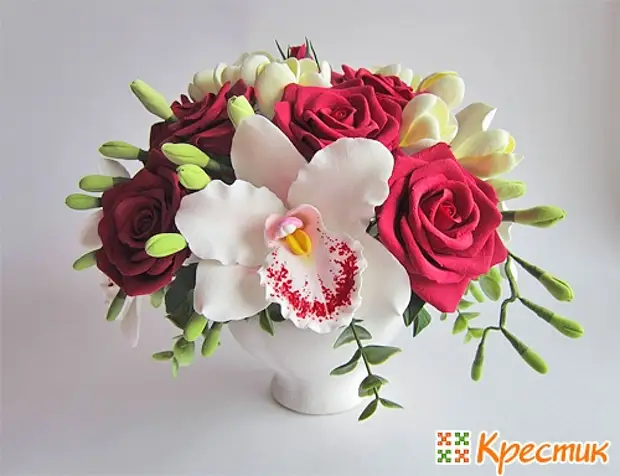
Polymer clay flowers
The polymer clay happens different colors and is sold in many stores for creativity.
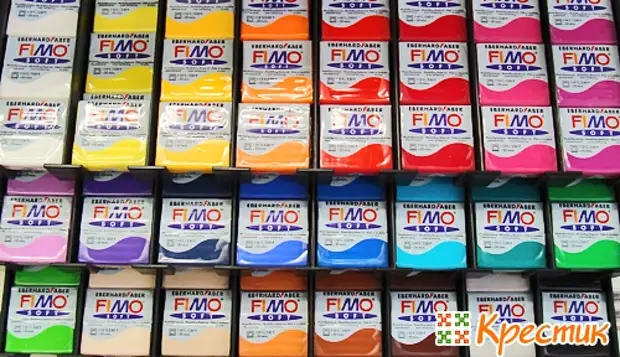
Cold porcelain
Cold porcelain is a mass like a clay, which sufficiently dries out outdoors. Such a lot is ideal to use for modeling colors or small figures.
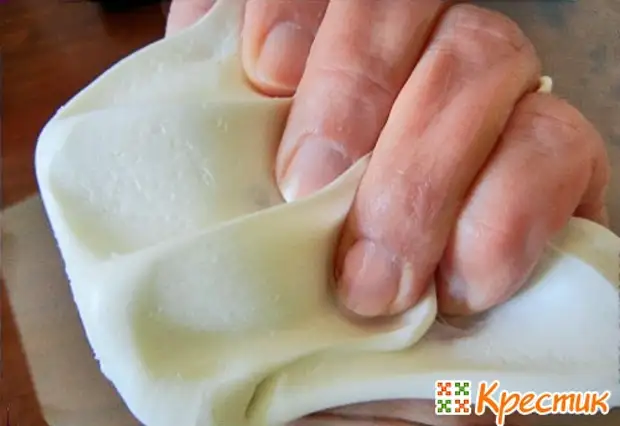
Cold china appeared in the middle of the 20th century. Initially, the composition was very simple: only PVA and starch was mixed.
Later, professional florists paid attention to cold china, the composition began to refine and improve in pursuit of elasticity and softness. The name is associated with the appearance: the dried weight looks like porcelain, but at the same time dries on its own and does not require firing in the furnace.
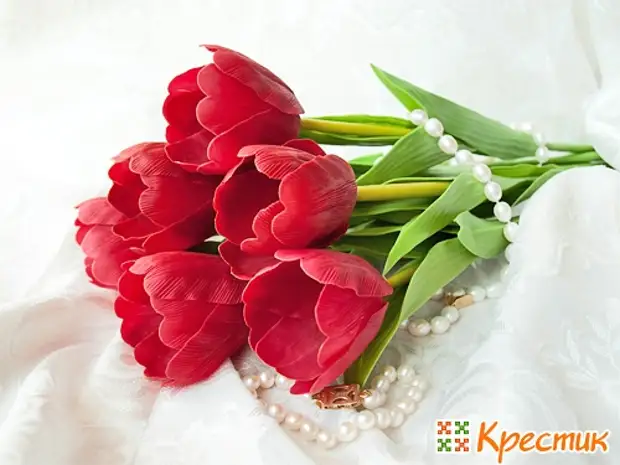
Cold porcelain flowers
Cold Porcelain Cooking Recipe
Cold porcelain can be done at home. The Internet offers a lot of recipes, such as this:- 2 cups of glue pva
- 2 cups of corn starch
- 2 tablespoons glycerin
- 2 tablespoons of stearic acid
- 1 tablespoon of benzo-acid sodium
All ingredients need to be mixed and warm on a small fire, until the resulting mass ceases to stick to the walls of the pan. Store the resulting mass should be wrapped in polyethylene or putting into a plastic container that does not let air. For pouring the mass requires from 1 to 3 days.
Of course, the recipe is very approximate, and the perfect mass can be obtained only after several experiments. You can paint as a finished product from a cold porcelain and a mass before smearing.
What is better to choose: clay or china?
Polymer clays There is a huge amount. But cold china has its advantages. The most important thing is the price. The polymer clay of the factory production is expensive, and the material for self-preparation of the porcelain will cost you several times cheaper. Another equally important quality is elasticity during the modeling. After several attempts to prepare a cold porcelain, you may well get a material with high elasticity.
Ceramic Floral Fixtures
So, if you decide to try yourself in ceramic floristry (I remind you that this is how in Russia it is called the art of making flowers from polymer clay or cold porcelain), then you may need the following devices.Paints
The most important of the minor materials is paints. The paints can be colored the finished product (if the clay was not colored initially), and you can add directly to the clay to give it the desired color. Professionals usually prefer oil paints, because they dry slowly than acrylic. In addition, when tinting with oil paints, you can achieve beautiful and smooth transitions, which is impossible to achieve acrylic.
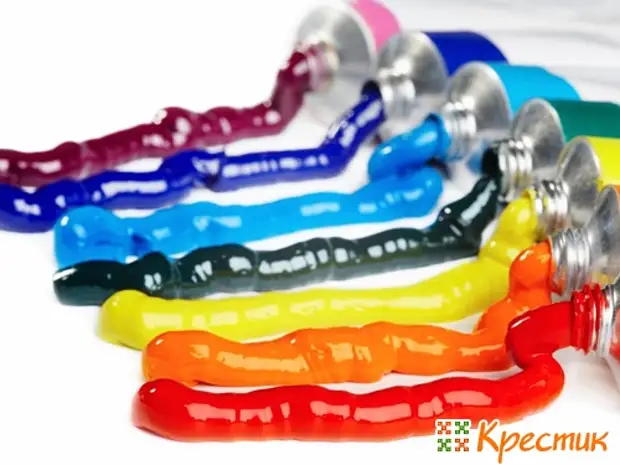
Oil paints
Glue
Usually all the flowers are manufactured in parts, and then to connect these elements to use the usual PVA glue. But it is worth remembering that PVA perfectly connects details from raw material with the same raw material or already dried, but several dried pieces of clay are most likely not glued with PVA. Reliable - super glue or moment. Grip instantly and firmly. Some professional florists instead of PVA use latex glue. It is intended for working with plastic, externally, very similar to PVA glue, and when drying it becomes transparent.
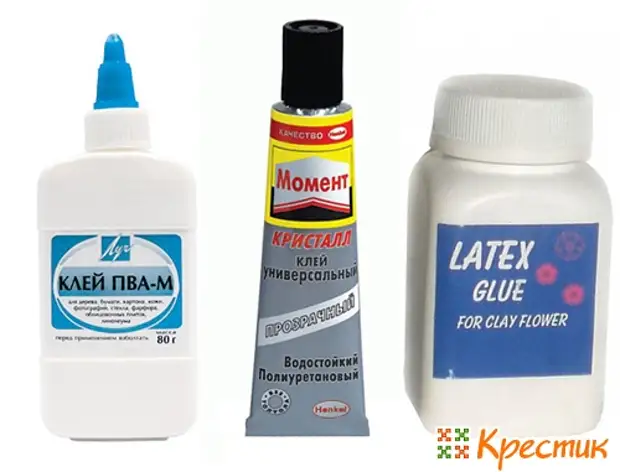
Glue: PVA, Moment, Latex
Wire
The basis of most colors in ceramic floristic is a wire frame. Wire can be thick in pencil stylus, and it can be completely thin - it all depends on the size of the flower. You can buy it in stores for creativity or in building markets. It is quite suitable for a wire for beading. And you can search in special stores for floristics.
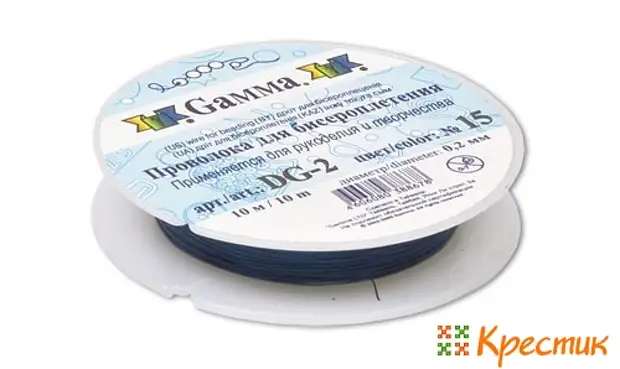
Teip-tape.
This interesting ribbon is needed to connect the parts planted on the wire with a frame. Outwardly looks like a double-sided sticky tape. Teip-tape well connects individual wires. It turns out a neat stalk, which later, at the request of the wizard, can be sealing clay. You can try to replace this tape with a construction paper tape, but the result may not work very beautiful.
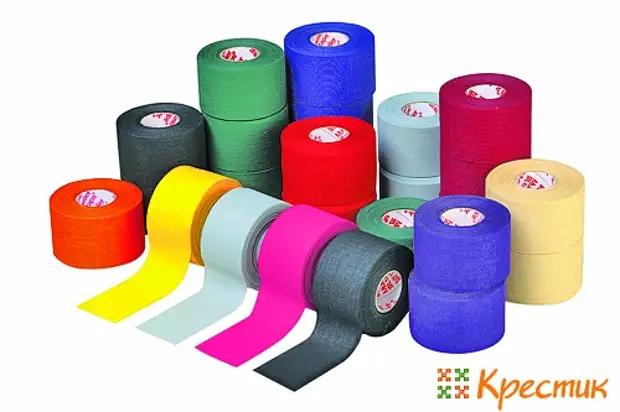
Matting mat and Food film
The film is needed to keep the finished clay for a long time, and the rug contains clean work in cleanliness. A good option will be a sealed plastic container for storing pieces of cold porcelain wrapped in food film. This organizes order for small colorful pieces (which will accumulate) and gives an additional guarantee from drying them.
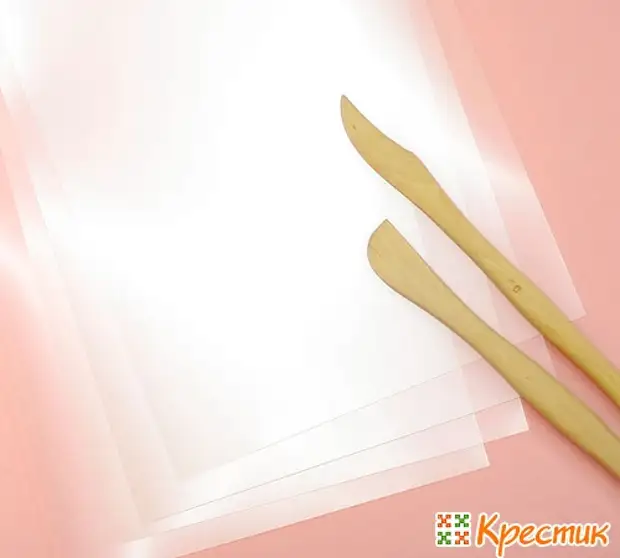
Scissors, pliers, pliers, etc.
For the first experiment, ordinary manicure scissors can be approached. But then there will be a need for several scissors: with long, straight and thin blades. The longer and thinner - the better.
Perhaps you will also need:
- Circumgars - for making decorations using accessories
- Tweezers - to attach minor details. In addition, tweezers can be quickly and gently make a loop on a thin wire
- Pliers - for bending or aligning thick wire.
- Siderase will be useful for cutting thick wire
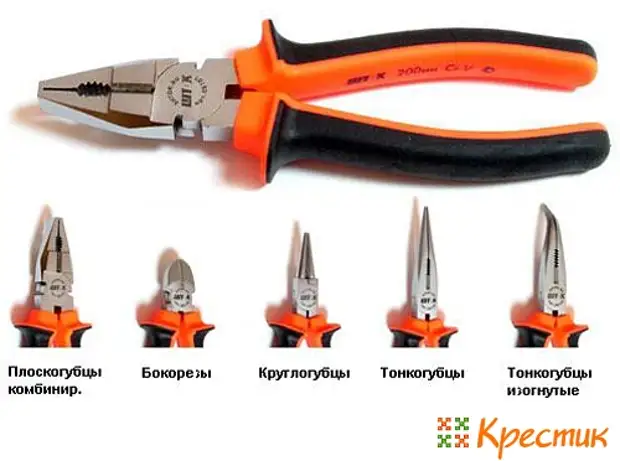
A small advice: in construction and housekeeping stores, these tools are sold 2-3 times cheaper than in specialized departments of needlework stores and creativity!
In addition to special tools, it is possible to be useful to you, ordinary blades (only very sharp) and needles.
Syringe Extruder
It works on the principle of confectionery syringe and is designed to extrude the motives. Fill out a polymer clay syringe, choose the desired nozzle and make clay with a piston. Nozzles for syringe-extruder can be the most different: starting with geometric shapes, ending with complex patterns.
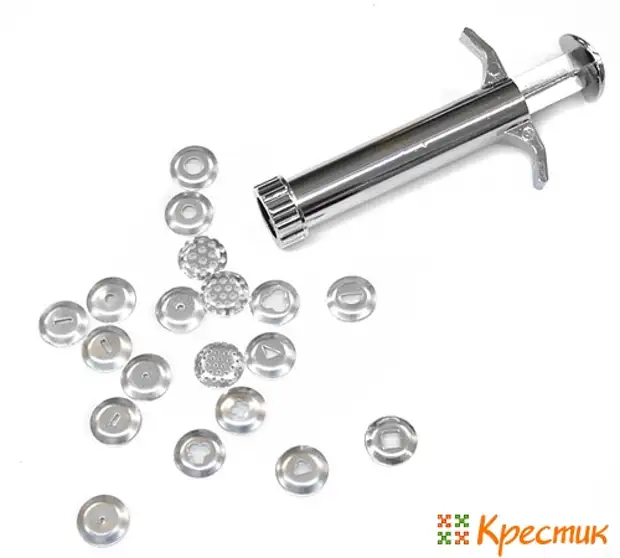
Stacks
One of the latter is stacks - small sticks for creating recesses and grooves. They are in the form of a simple stick with a sharp end or sticks with balls at the ends.
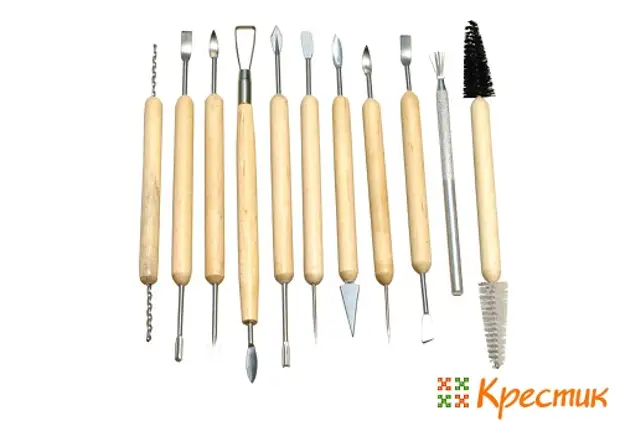
As a substitute for the first you can use the needle, sewn or wand from Japanese cuisine.
The second stack with balls may seem indispensable, but it is not at all. Look in your reserves a durable wand (pencil, tassel or a piece of thick wire) and stick to it a smooth bead of the size you need.
Molda and catter
Mold is an imprint made with a texture of a live flower or petal leaf texture, which is used to obtain realistic resemblance when modeling. It will be difficult to do without moldes, but many elements still can be cut off without them, so do not rush to acquire moldes.
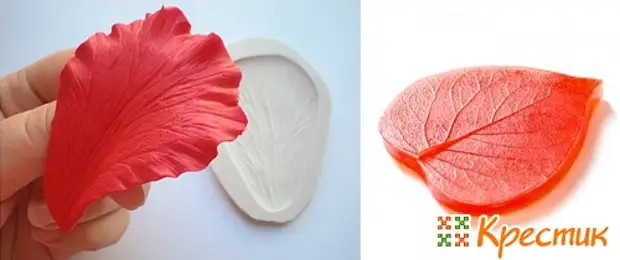
As for the catteros - molds for foliage and colors, then professional florists do not use them. The same petals are boring and look not very natural. If you still decided to take advantage of such a form, then do not forget to work manually over each petal and leaves: a slightly changed the form you can add it individuality and realistic.
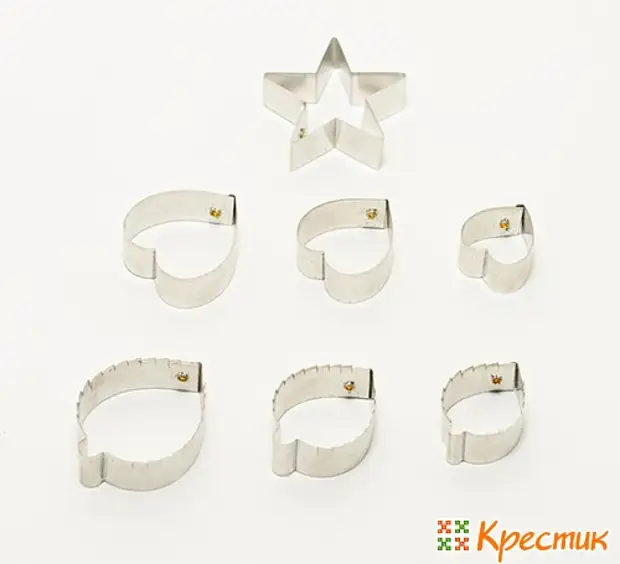
Many masters make catteras on their own from tin cans, cutting them into tin strips, and then flexing under the desired shape. Some catteras are really quite useful, but without most of the same, you can do it: for example, make a pattern from cardboard, which is applied to a rolled piece of plastic and neatly cut with scissors or roller knife.
Paste-machine for clay rolling
The principle of the operation of the car is the same as the machine for rolling noodles. Easy movement of hand and clay lump turns into a thin plate.
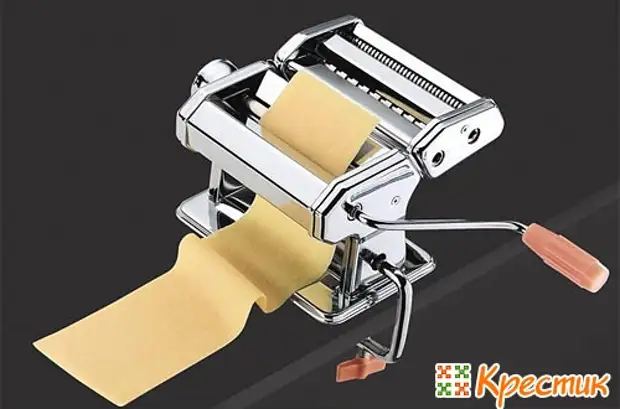
Master class on ceramic floristry
And finally, several very visual master classes on the modeling of colors.
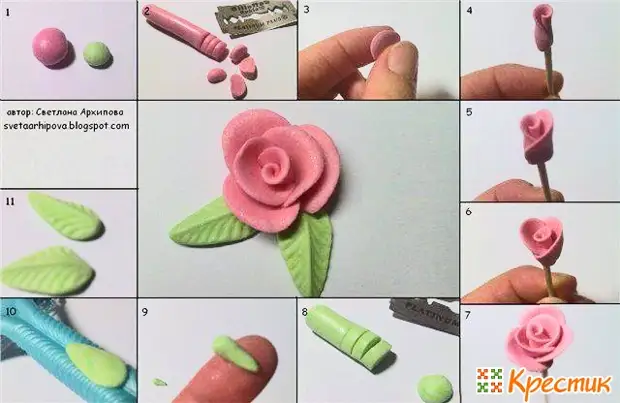
Rose from chorodic porcelain
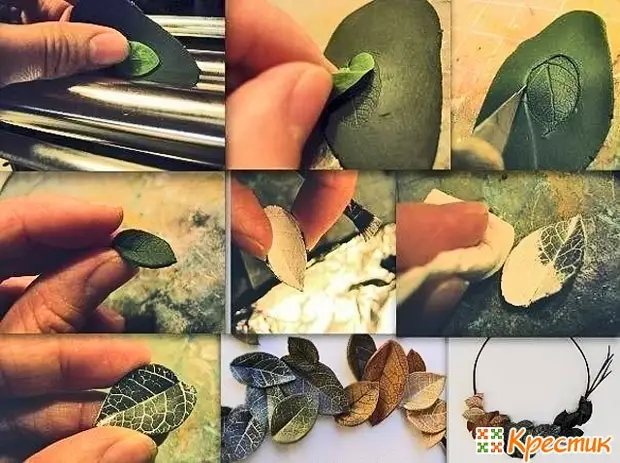
Polymer clay leafle
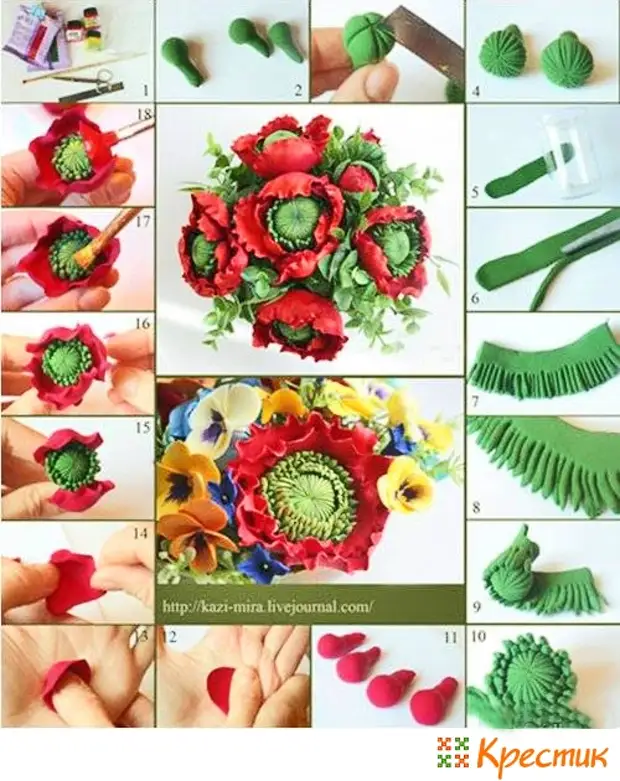
Polymer clay poppy
Whatever the material you have chosen (cold porcelain or polymer clay), as a result, a wonderful product can be obtained, not distinguishable from real colors!

